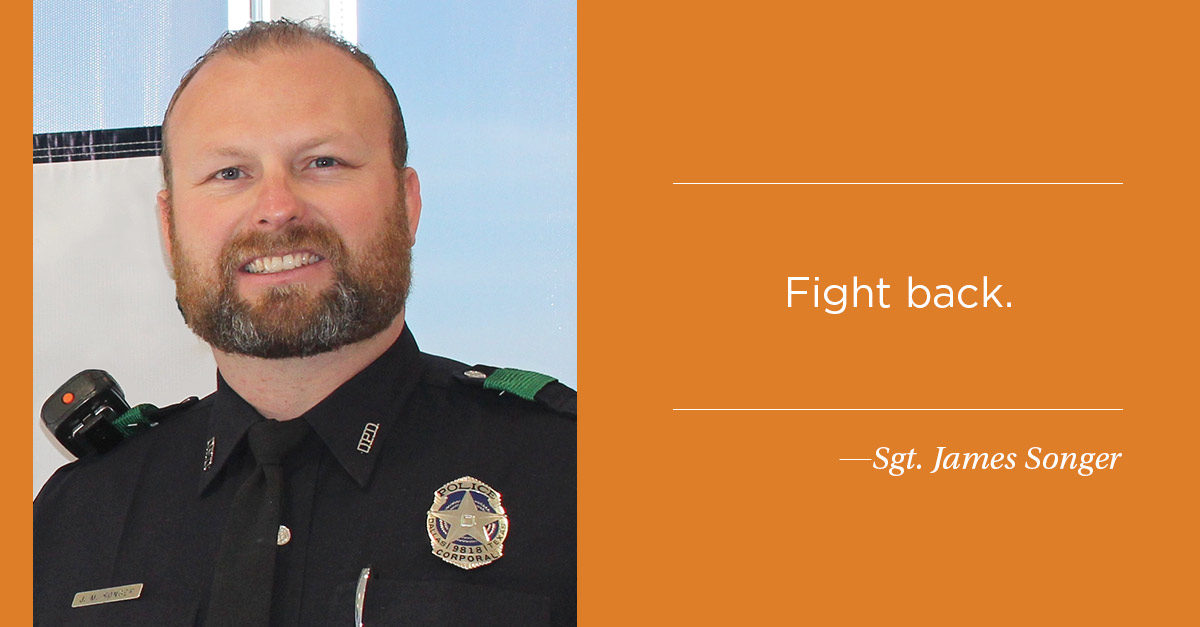Sergeant James Songer of the Dallas, TX, Police Department, has close ties with the public, having worked as a community police officer for the downtown Dallas area. Yet when his father-in-law asked him what the police department was doing to teach civilians about protecting themselves during a mass shooting, Songer realized he didn’t have a good answer.
Since then, Songer has learned how to handle active shooters through Special Weapons and Tactics (SWAT) training as well as Advanced Law Enforcement Rapid Response Training (ALERRT), which are both offered through Texas State University in San Marcos, TX. Songer passes along his wealth of information in a special course that teaches ordinary citizens what to do if they find themselves in the vicinity of an active shooter in a public place, such as in a school, movie theater, store, or on the street.
“The purpose of the class is not to scare people, but to educate them and help them to survive,” Songer says. “People come away from the class with a specific plan on what they should do if they are involved in a mass shooting, and what they should not do.”
Mass shootings and the effects of gun violence have been at the forefront of national news, particularly within the past year, as the number of shootings in U.S. schools, universities, and other types of facilities has continued to escalate. From January 1–July 11, 2018, 175 mass shootings were reported across the United States, according to nonprofit Gun Violence Archive. Oftentimes, when the media reports on these events, custodians and other building staff are spotlighted as those who have been responsible for helping others in the midst of tragedy.
Songer teaches the course several times a week to various groups of building occupants and staff, including apartment complex residents, property owners, security officers, church members, and school staff. He is enthusiastic about sharing his information with building managers, custodians, and other facility personnel who will be in attendance at the ISSA Show North America 2018, October 29-November 1, 2018. “This is a class that can benefit everyone, he said. “I am very passionate about the training and believe that every civilian should go through it.”
Tip: Fight Back.
When citizens fight back against an active shooter, the incident is over in half the time, compared to if they had done nothing other than calling the police, according to Songer. Don’t worry, actively fighting back does not mean grabbing a gun and hunting down the shooter. It would more likely involve a group of people charging the shooter to get his gun. Fighting back should never involve trying to reason with the gunman. “You can’t talk them down because they’ve already made up their mind what to do,” Songer said.
Learn other tips on what to do—and what to not do—during an active shooter situation.
Don’t miss other informative articles on hot topics that are guaranteed to help you with your company or facility:
- True or False: Green Cleaning Efforts Can’t Use Disinfectants
- Participatory Ergonomics: A Leadership Style for Improving Employee Performance
- How to Target Your Most Likely Contracts (and Close the Deal)
- How Environmental Services and Infection Control Teams Can Work Together
- Budget for the Lifespan of Your Facility




